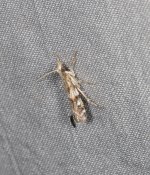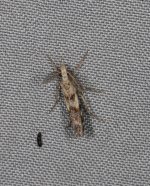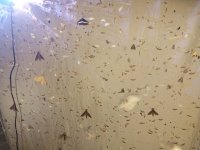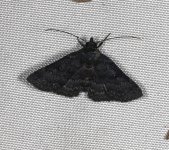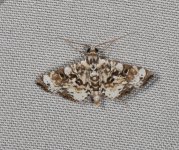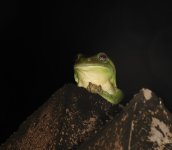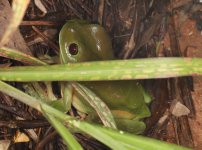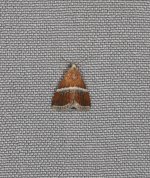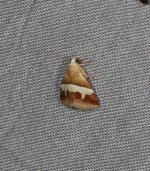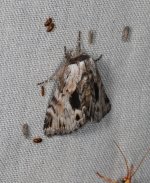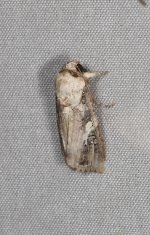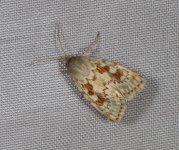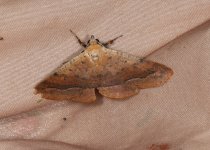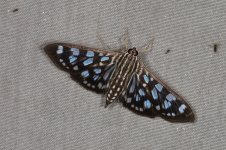-
Welcome to BirdForum, the internet's largest birding community with thousands of members from all over the world. The forums are dedicated to wild birds, birding, binoculars and equipment and all that goes with it.
Please register for an account to take part in the discussions in the forum, post your pictures in the gallery and more.
You are using an out of date browser. It may not display this or other websites correctly.
You should upgrade or use an alternative browser.
You should upgrade or use an alternative browser.
Australian Moths and other garden observations (3 Viewers)
- Thread starter Atropos
- Start date
More options
Who Replied?With the Wet finally kicking in properly, all be it a bit late, my last couple of sessions have been more productive. I am only just starting to sort the photos as work has been hectic leaving little time for the more interesting things in life but the first couple of sessions in Feb have both broken the 200 species mark for the first time this season. Always good when the sheet looks like this!
Attachments
Last night caught two of these Dahlia (Erebidae, Erebinae). They are either a species called Dahlia melanica which is currently only known from PNG or more likely a completely new species. Both have been retained and will get sent to ANIC with my next batch of specimens
Attachments
The numbers in the Tropics can be intimidating thats for sure. The night in the photo was the best night so far this season with c2000 individuals of 200+ species (only just started to look though the photos) but compared to last Wet that is very poor. Peak last season was a minimum of 20000 moths on the sheet and so far over 350 species / genera with approx another 60 to ID. Should add of course they dont appear at once so as the evening develops you get to know which ones were there before and you start looking for the different ones in the mix - y big night completely drained two camera batteries with over 800 photosIncredible numbers on the sheet @Atropos I wouldn't know where to start
First time have been able to get out trapping for a couple of weeks, primarily due to the weather - clear skies and full moon not really worth the effort! Last night conditions were nearly perfect for the first half (calm, humid with rain) then in the space of 15 minutes rain stopped, clouds went and the moon came out ...and a rather bright one it was so ended up packing up by midnight. That said was very productive with close to 2000 individuals by the time turned the lights off. Have not even finished January's photos yet so this is just the obvious stuff and the rest I will get to over the next few weeks
Agathia ANIC1 (Geometrinae) - one of two undescribed but known Agathia I catch here
Agrotera ignepicta (Crambidae, Spilomelinae) - a really beautiful visitor
Blenina lichenopa (Nolidae, Chloephorinae) - a regular on the sheet
Brithys crini (Noctuidae, Noctuinae) - prior to this season there was just a single record from the Cape north of Cooktown but this Wet has been a reguar in small numbers, must have seen it on at least 8 dates so far
Buzara latizona (Erebidae, Erebinae) - first record for a while
Callopistria maillardi (Noctuidae, Acronictinae) - a scarce but regular visitor
Cerberonoton severina (Sphingidae) - Prior to Dec 2021 no records for the western Cape (well known in the east), have now seen this on approx 7 occasions here in Weipa
Dysrhombia longipennis (Uraniidae) - only my third record of this range restricted species, all records are from the to half of the Cape
Filodes fulvibasalis (Crambidae, Spilomelinae) - one of my favourite Crambids
Loranthacydia (Tortricidae, Olethruetinae) - a new genus for me
Omiodes dispilotalis (Crambidae, Spilomelinae) - a scarce but annual visitor to the sheet
Pheraspis spodea (Notodontidae, Notodontinae) - only my third record of this species
Psilogramma papuensis (Sphingidae) one of two species of Psilogramma on the sheet
Raparna crocophara (Erebidae, Boletobiinae) - a common and regular visitor to the sheet, sometimes in good numbers
Rhynchina inornata (Erebidae, Hypeninae) - an annual visitor
Agathia ANIC1 (Geometrinae) - one of two undescribed but known Agathia I catch here
Agrotera ignepicta (Crambidae, Spilomelinae) - a really beautiful visitor
Blenina lichenopa (Nolidae, Chloephorinae) - a regular on the sheet
Brithys crini (Noctuidae, Noctuinae) - prior to this season there was just a single record from the Cape north of Cooktown but this Wet has been a reguar in small numbers, must have seen it on at least 8 dates so far
Buzara latizona (Erebidae, Erebinae) - first record for a while
Callopistria maillardi (Noctuidae, Acronictinae) - a scarce but regular visitor
Cerberonoton severina (Sphingidae) - Prior to Dec 2021 no records for the western Cape (well known in the east), have now seen this on approx 7 occasions here in Weipa
Dysrhombia longipennis (Uraniidae) - only my third record of this range restricted species, all records are from the to half of the Cape
Filodes fulvibasalis (Crambidae, Spilomelinae) - one of my favourite Crambids
Loranthacydia (Tortricidae, Olethruetinae) - a new genus for me
Omiodes dispilotalis (Crambidae, Spilomelinae) - a scarce but annual visitor to the sheet
Pheraspis spodea (Notodontidae, Notodontinae) - only my third record of this species
Psilogramma papuensis (Sphingidae) one of two species of Psilogramma on the sheet
Raparna crocophara (Erebidae, Boletobiinae) - a common and regular visitor to the sheet, sometimes in good numbers
Rhynchina inornata (Erebidae, Hypeninae) - an annual visitor
Attachments
-
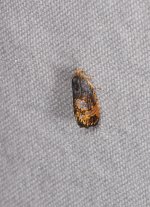 Loranthacydia.JPG611.2 KB · Views: 2
Loranthacydia.JPG611.2 KB · Views: 2 -
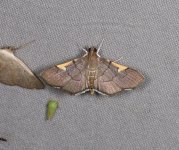 Omiodes dispilotalis.JPG1.2 MB · Views: 2
Omiodes dispilotalis.JPG1.2 MB · Views: 2 -
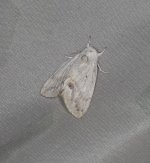 Pheraspis spodea.JPG1.7 MB · Views: 2
Pheraspis spodea.JPG1.7 MB · Views: 2 -
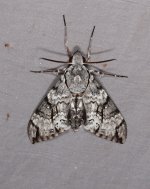 Psilogramma papuensis.JPG2.9 MB · Views: 2
Psilogramma papuensis.JPG2.9 MB · Views: 2 -
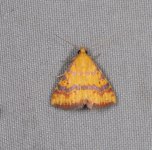 Raparna crocophara.JPG796.5 KB · Views: 2
Raparna crocophara.JPG796.5 KB · Views: 2 -
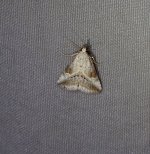 Rhynchina inornata (2).JPG570.8 KB · Views: 1
Rhynchina inornata (2).JPG570.8 KB · Views: 1 -
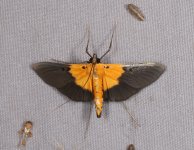 Filodes fulvibasalis.JPG1.3 MB · Views: 2
Filodes fulvibasalis.JPG1.3 MB · Views: 2 -
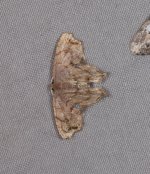 Dysrhombia longipennis (1).JPG1.4 MB · Views: 2
Dysrhombia longipennis (1).JPG1.4 MB · Views: 2 -
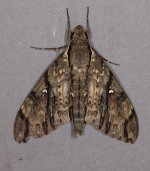 Cerberonoton severina.JPG2.8 MB · Views: 2
Cerberonoton severina.JPG2.8 MB · Views: 2 -
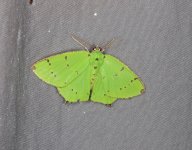 Agathia sp. ANIC1.JPG1.5 MB · Views: 1
Agathia sp. ANIC1.JPG1.5 MB · Views: 1 -
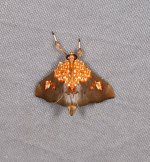 Agrotera ignepicta.JPG777.4 KB · Views: 1
Agrotera ignepicta.JPG777.4 KB · Views: 1 -
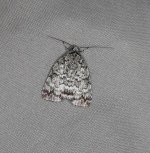 Blenina lichenopa.JPG1.4 MB · Views: 1
Blenina lichenopa.JPG1.4 MB · Views: 1 -
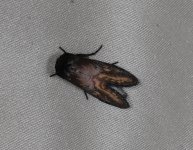 Brithys crini.JPG884.2 KB · Views: 2
Brithys crini.JPG884.2 KB · Views: 2 -
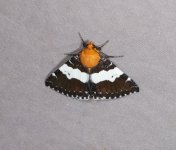 Buzara latizona.JPG2.1 MB · Views: 2
Buzara latizona.JPG2.1 MB · Views: 2 -
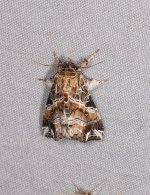 Callopistria maillardi.JPG1.2 MB · Views: 2
Callopistria maillardi.JPG1.2 MB · Views: 2
Managed to get out both Friday and last night and now have the minor task of IDing over 700 photos...have not even finished the initial sort for January this year, or in fact finished any of the last ten years specimen IDing, really need a prolonged period off work think going to have to start playing the lottery!
Anyway one of the undoubted highlights from Friday was this stunning Symphonia multipictalis (Crambidae, Acentropinae) whose ID has been confirmed by a friend who is co-author o the Pyralioidae of Borneo volumes. It is as far as we can tell the first record south of Java.
Anyway one of the undoubted highlights from Friday was this stunning Symphonia multipictalis (Crambidae, Acentropinae) whose ID has been confirmed by a friend who is co-author o the Pyralioidae of Borneo volumes. It is as far as we can tell the first record south of Java.
Attachments
Have finally finished the first sort of last Friday (8th March) photos - the best night of the Wet so far with 251 species so far and another 60 photos still being worked on...I am just starting on Saturday 9ths photos - we have torrential rain and strong winds at moment as there is a TC in the SW Gulf pulling our weather down so not really suitable to get out and about! Here are some of the highlights from Friday
Acropteris ANIC2 and Acropteris teriadata (Uraniidae) - Acropteris is a scarce but regular visitor to the sheet in the Wet
Amphitorna lechriodes (Drepanidae) - only my fifth record and my first for a couple of years - mine are the only recent records for this species
Anomis sp (Scoliopteryginae) - my second record of this very dark Anomis. This is almost certainly a new species, Anomis ANIC 3 is similar but only known from the Top End / WA and is subtly different. This individual has been retained and will go down to ANIC for them to assess
Ecpyrrhorrhoe haematalis (Crambidae, Pyraustinae) - just cannot get my head round the new name, Paligia was much easier to spell! Rarely recorded with fewer than 15 records from Aus, all of which are from the top of the Cape. There are 8 recent records all within the last three years
Epiplema leucosema (Uraniidae) - another species of Uranid, think in total have recorded 8 species last weekend. ANother range restricted species with all recent records being mine from the top of the Cape in the last two years
Labdia cyanogramma (Cosmopterginae) - only my second record of this quite distinctive species
Moerarchis placomorpha (Tineidae) - a regular visitor in small numbers
Paracrama latimargo (Nolidae, Chloephorinae) - my second record this Wet season of this normally scarce species
Theretra indistincta (Sphingidae) - not seen this species very often this Wet
Thyas miniacea (Erebidae, Erebinae) - a spectacular species when it shows its hindwing!
Acropteris ANIC2 and Acropteris teriadata (Uraniidae) - Acropteris is a scarce but regular visitor to the sheet in the Wet
Amphitorna lechriodes (Drepanidae) - only my fifth record and my first for a couple of years - mine are the only recent records for this species
Anomis sp (Scoliopteryginae) - my second record of this very dark Anomis. This is almost certainly a new species, Anomis ANIC 3 is similar but only known from the Top End / WA and is subtly different. This individual has been retained and will go down to ANIC for them to assess
Ecpyrrhorrhoe haematalis (Crambidae, Pyraustinae) - just cannot get my head round the new name, Paligia was much easier to spell! Rarely recorded with fewer than 15 records from Aus, all of which are from the top of the Cape. There are 8 recent records all within the last three years
Epiplema leucosema (Uraniidae) - another species of Uranid, think in total have recorded 8 species last weekend. ANother range restricted species with all recent records being mine from the top of the Cape in the last two years
Labdia cyanogramma (Cosmopterginae) - only my second record of this quite distinctive species
Moerarchis placomorpha (Tineidae) - a regular visitor in small numbers
Paracrama latimargo (Nolidae, Chloephorinae) - my second record this Wet season of this normally scarce species
Theretra indistincta (Sphingidae) - not seen this species very often this Wet
Thyas miniacea (Erebidae, Erebinae) - a spectacular species when it shows its hindwing!
Attachments
-
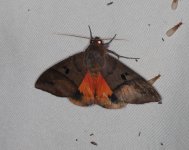 Thyas miniacea.JPG2.9 MB · Views: 4
Thyas miniacea.JPG2.9 MB · Views: 4 -
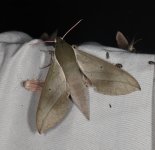 Theretra indistincta.JPG2.5 MB · Views: 5
Theretra indistincta.JPG2.5 MB · Views: 5 -
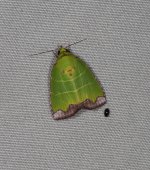 Paracrama latimargo.JPG1.5 MB · Views: 5
Paracrama latimargo.JPG1.5 MB · Views: 5 -
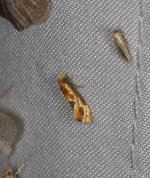 Moerarchis placomorpha.JPG625.2 KB · Views: 5
Moerarchis placomorpha.JPG625.2 KB · Views: 5 -
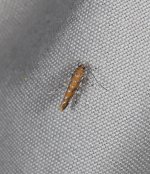 Labdia cyanogramma.JPG669.8 KB · Views: 3
Labdia cyanogramma.JPG669.8 KB · Views: 3 -
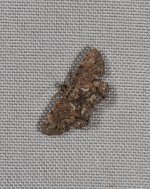 Epiplema leucosema (2).JPG989.8 KB · Views: 3
Epiplema leucosema (2).JPG989.8 KB · Views: 3 -
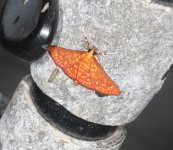 Ecpyrrhorrhoe haematalis.JPG634.4 KB · Views: 4
Ecpyrrhorrhoe haematalis.JPG634.4 KB · Views: 4 -
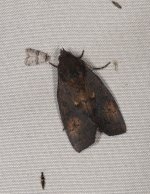 Anomis cf ANIC3 (1).JPG2.1 MB · Views: 4
Anomis cf ANIC3 (1).JPG2.1 MB · Views: 4 -
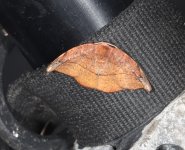 Amphitorna lechriodes.JPG1 MB · Views: 5
Amphitorna lechriodes.JPG1 MB · Views: 5 -
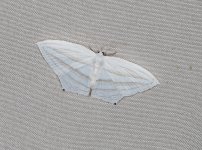 Acropteris teriadata.JPG1.8 MB · Views: 4
Acropteris teriadata.JPG1.8 MB · Views: 4 -
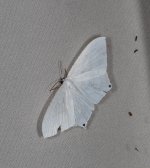 Acropteris sp. ANIC2.JPG2.4 MB · Views: 4
Acropteris sp. ANIC2.JPG2.4 MB · Views: 4
To quote my favourite sloth, Sid, I almost did something involuntary on Saturday... there was a large Green Tree Frog that watched proceedings that evening from the top of a wall, occasionally taking a tasty morsel. It vanished after a while apparently to get a better position from which to join in the activities by jumping onto my shoulder. To say I was startled would be an understatement and luckily there were no small children around to be offended by my language. We came to a new arrangement and it was safely relocated to the sidelines eating it's choice of snacks...
Said frog before and after he joined me up close and personal!
Said frog before and after he joined me up close and personal!
Attachments
Have a week off work and a mothing friend coming to stay so much to my wifes dismay will be a week of solid trapping and a chance to get a whole heap of specimens ready to go down to ANIC for identification...and a chance to catch up on my stupid backlog of photos...
Two from February this year
Eublemma leucodesma and Eubemma lozostropha (Boletobiinae) both scarce visitors and rarely on the same night
Two from February this year
Eublemma leucodesma and Eubemma lozostropha (Boletobiinae) both scarce visitors and rarely on the same night
Attachments
Last night I set my trap up slightly differently (see first picture below) with the LepiLED on the otherside of the sheet to the MV. I forgot my strimmer to garden the area behind so could not get it quite as I would have liked but I think that this was less effective at holding stuff as there was not a "dark" side for anything to rest on so I shall go back to my usual style from now on. Conditions were good until about 11pm when the light rain and cloud cover had all cleared and the waning moon appeared, all be it muted somewhat by thin clouds.
Here is a selection from my initial download and edit of the photos.
Acropteris nanula (Uraniidae) - one of the two named species of Acropteris I catch, an annual if rare visitor
Epiplema stereogramma (Uraniidae) - my fourth record of this small species
Filodes fulvibasalis (Crambidae, Spilomelinae) - my fourth record for this Wet
Lophoruza diversalis (Boletobiinae) - an annual but scarce visitor
Neogyne ANIC3 (Geometridae, Ennominae) - I catch this genus a couple of times a year
Paectes cyanodes (Euteliinae) - a scarce visitor , seen most years but usually only singles.
Penicillaria dorispuncta (Euteliinae) - I have seen this on fewer than ten occasions over the last decade so always nice to see
Psalidostetha banksiae (Notodontinae) - annual in small numbers visitor
Psilogramma papuensis (Sphingidae) - a regular visitor to the sheet
Syntherata (Saturnidae) - numbers definitely dropping off now with just three individuals last night
Trigonodes cephise (Erebidae, Erebiae) - both the Trigonodes species were common visitors ot the sheet when I lived around Cairns but on the Cape they are now scarce visitors
Here is a selection from my initial download and edit of the photos.
Acropteris nanula (Uraniidae) - one of the two named species of Acropteris I catch, an annual if rare visitor
Epiplema stereogramma (Uraniidae) - my fourth record of this small species
Filodes fulvibasalis (Crambidae, Spilomelinae) - my fourth record for this Wet
Lophoruza diversalis (Boletobiinae) - an annual but scarce visitor
Neogyne ANIC3 (Geometridae, Ennominae) - I catch this genus a couple of times a year
Paectes cyanodes (Euteliinae) - a scarce visitor , seen most years but usually only singles.
Penicillaria dorispuncta (Euteliinae) - I have seen this on fewer than ten occasions over the last decade so always nice to see
Psalidostetha banksiae (Notodontinae) - annual in small numbers visitor
Psilogramma papuensis (Sphingidae) - a regular visitor to the sheet
Syntherata (Saturnidae) - numbers definitely dropping off now with just three individuals last night
Trigonodes cephise (Erebidae, Erebiae) - both the Trigonodes species were common visitors ot the sheet when I lived around Cairns but on the Cape they are now scarce visitors
Attachments
-
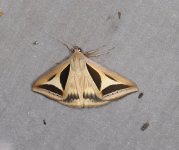 Trigonoodes cephise.JPG1.6 MB · Views: 4
Trigonoodes cephise.JPG1.6 MB · Views: 4 -
Syntherata.JPG11.9 MB · Views: 3
-
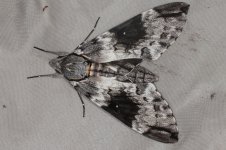 Psilogramma papuensis.JPG2.6 MB · Views: 2
Psilogramma papuensis.JPG2.6 MB · Views: 2 -
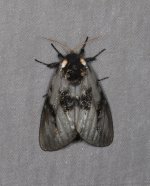 Psalidostetha banksiae.JPG2.2 MB · Views: 2
Psalidostetha banksiae.JPG2.2 MB · Views: 2 -
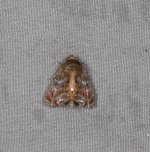 Penicillaria dorsipuncta.JPG1.5 MB · Views: 2
Penicillaria dorsipuncta.JPG1.5 MB · Views: 2 -
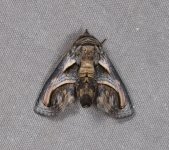 Paectes cyanodes.JPG1.1 MB · Views: 2
Paectes cyanodes.JPG1.1 MB · Views: 2 -
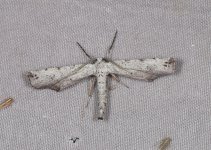 Neogyne sp. ANIC3.JPG1.5 MB · Views: 2
Neogyne sp. ANIC3.JPG1.5 MB · Views: 2 -
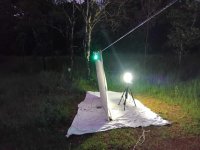 434628923_2256597931213013_9172157333626176201_n.jpg112 KB · Views: 4
434628923_2256597931213013_9172157333626176201_n.jpg112 KB · Views: 4 -
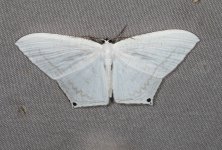 Acropteris nanula.JPG2.1 MB · Views: 4
Acropteris nanula.JPG2.1 MB · Views: 4 -
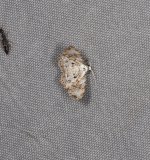 Epiplema stereogramma.JPG1,004.6 KB · Views: 2
Epiplema stereogramma.JPG1,004.6 KB · Views: 2 -
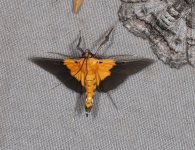 Filodes fulvibasalis.JPG1.2 MB · Views: 2
Filodes fulvibasalis.JPG1.2 MB · Views: 2 -
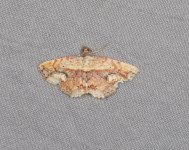 Lophoruza diversalis.JPG1.5 MB · Views: 2
Lophoruza diversalis.JPG1.5 MB · Views: 2
I have a mothing buddy up for the week so we are out every night but will probably barely start the process of processing all the photos. These are the obvious highlights from the first two nights but there are a lot of interesting micros in particular to work through
Avitta ophiusalis (Erebidae, Erebinae) - continuing the good run of this species this season, now well in to double figures for a species that wasn't really annual prior to that
Cataclysta marginipuncta (Crambidae, Acentropinae) - only my second record of this species, there were two on the sheet
Doratifera corallina (Limacodidae) - my second record this year of this species more normally encountered in the NT / WA
Ecyprrhorrhoe (Crambidae, Spilomelinae) - much prefer its old genus name of Paliga, easier to say and even I can spell it correctly, the new genus name not a chance for either!
Endoxyla polyploca (Cossidae) - first record for both myself and the Cape. There seem to be very few published records and as far as I can tell thi is only the second photo of a live specimen
Hyposidra janiaria (Geometridae, Ennominae)- a very good year for this with several on the sheet most nights at the moment
Lophoruza diversalis (Erebidae, Boletobiinae) - another species having a very good season, this is my fifth for the Wet
Micrapatetis nr ANIC3 (Noctuidae, Acontiinae) - I have not seen one with the top fascia this narrow before, close to specimens labelled as ANIC3 on BOLD
Spirama recessa (Erebidae, Erebinae) - female, my first for several months and a very nice fresh individual
Xenogenes gloriosa (Erebidae, Erebinae) - such a stunning moth always a pleasure to see on the sheet
Avitta ophiusalis (Erebidae, Erebinae) - continuing the good run of this species this season, now well in to double figures for a species that wasn't really annual prior to that
Cataclysta marginipuncta (Crambidae, Acentropinae) - only my second record of this species, there were two on the sheet
Doratifera corallina (Limacodidae) - my second record this year of this species more normally encountered in the NT / WA
Ecyprrhorrhoe (Crambidae, Spilomelinae) - much prefer its old genus name of Paliga, easier to say and even I can spell it correctly, the new genus name not a chance for either!
Endoxyla polyploca (Cossidae) - first record for both myself and the Cape. There seem to be very few published records and as far as I can tell thi is only the second photo of a live specimen
Hyposidra janiaria (Geometridae, Ennominae)- a very good year for this with several on the sheet most nights at the moment
Lophoruza diversalis (Erebidae, Boletobiinae) - another species having a very good season, this is my fifth for the Wet
Micrapatetis nr ANIC3 (Noctuidae, Acontiinae) - I have not seen one with the top fascia this narrow before, close to specimens labelled as ANIC3 on BOLD
Spirama recessa (Erebidae, Erebinae) - female, my first for several months and a very nice fresh individual
Xenogenes gloriosa (Erebidae, Erebinae) - such a stunning moth always a pleasure to see on the sheet
Attachments
-
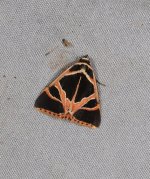 Xenogenes gloriosa.JPG1.1 MB · Views: 4
Xenogenes gloriosa.JPG1.1 MB · Views: 4 -
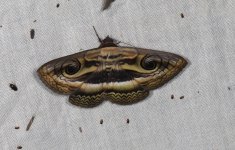 Spirama recessa.JPG1.5 MB · Views: 4
Spirama recessa.JPG1.5 MB · Views: 4 -
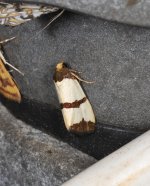 Micrapatetis sp. ANIC3.JPG488.2 KB · Views: 4
Micrapatetis sp. ANIC3.JPG488.2 KB · Views: 4 -
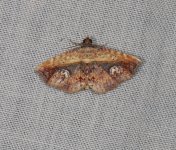 Lophoruza diversalis.JPG1.1 MB · Views: 3
Lophoruza diversalis.JPG1.1 MB · Views: 3 -
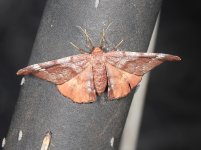 Hyposidra janiaria 01 04 2024.JPG1.4 MB · Views: 3
Hyposidra janiaria 01 04 2024.JPG1.4 MB · Views: 3 -
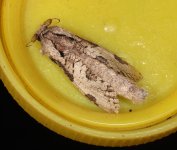 Endoxyla polyploca.JPG728.7 KB · Views: 3
Endoxyla polyploca.JPG728.7 KB · Views: 3 -
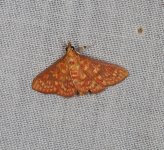 Ecpyrrhorrhoe haematalis.JPG1 MB · Views: 3
Ecpyrrhorrhoe haematalis.JPG1 MB · Views: 3 -
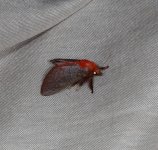 Doratifera corallina.JPG739.4 KB · Views: 3
Doratifera corallina.JPG739.4 KB · Views: 3 -
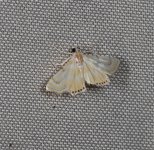 Cataclysta marginipuncta.JPG932.4 KB · Views: 4
Cataclysta marginipuncta.JPG932.4 KB · Views: 4 -
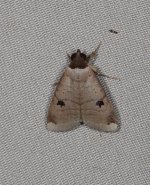 Avitta ophiusalis 01 04 2024 (1).JPG1.1 MB · Views: 4
Avitta ophiusalis 01 04 2024 (1).JPG1.1 MB · Views: 4
A few more of the initial highlights, thee are from last night. I have not really started looking at anything other than the very obvious stuff at the moment
Anthela phoenicias (Anthelidae) - a regular visitor to the sheet
Arrade ostentalis (Erebidae, Hypeninae) - my fifth record of this species that currently is not officially on the Australian list.
Arrade percnopis (Erebidae, Hypeninae) - the commoner of the Arrade species that I record here
Bastilla solomonensis (Erebidae, Erebinae) - a nice fresh example
Eudocima materna (Erebidae, Calpinae) - male, only the second I have seen on the Cape and the first for nearly three years
Pygmaeomrpha aquila (Limacodidae) - there were at least tw0 individuals on the sheet last night
Pygmaeomrpha ocularis (Limacodidae) - still probably my favourite Limacod
Rivula everta (Erebidae, Rivulinae) - an occasional visitor to the sheet
Rivula niphodema (Erebidae, Rivulinae) - a scarce visitor to the sheet
Scopelodes nitens (Limacodidae) - this genus has to have some of the longest palps I have ever seen in proportion to its head!
Teleclita dryinopa (Notodontidae) - my first on the Cape mainland, although have recorded it on TI
Anthela phoenicias (Anthelidae) - a regular visitor to the sheet
Arrade ostentalis (Erebidae, Hypeninae) - my fifth record of this species that currently is not officially on the Australian list.
Arrade percnopis (Erebidae, Hypeninae) - the commoner of the Arrade species that I record here
Bastilla solomonensis (Erebidae, Erebinae) - a nice fresh example
Eudocima materna (Erebidae, Calpinae) - male, only the second I have seen on the Cape and the first for nearly three years
Pygmaeomrpha aquila (Limacodidae) - there were at least tw0 individuals on the sheet last night
Pygmaeomrpha ocularis (Limacodidae) - still probably my favourite Limacod
Rivula everta (Erebidae, Rivulinae) - an occasional visitor to the sheet
Rivula niphodema (Erebidae, Rivulinae) - a scarce visitor to the sheet
Scopelodes nitens (Limacodidae) - this genus has to have some of the longest palps I have ever seen in proportion to its head!
Teleclita dryinopa (Notodontidae) - my first on the Cape mainland, although have recorded it on TI
Attachments
-
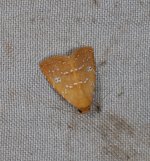 Rivula everta.JPG777.1 KB · Views: 3
Rivula everta.JPG777.1 KB · Views: 3 -
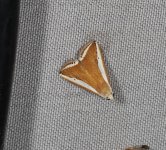 Rivula niphodesma.JPG797.3 KB · Views: 2
Rivula niphodesma.JPG797.3 KB · Views: 2 -
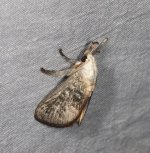 Scopelodes nitens.JPG1.6 MB · Views: 2
Scopelodes nitens.JPG1.6 MB · Views: 2 -
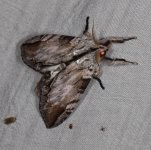 Teleclita dryinopa (1).JPG1.8 MB · Views: 2
Teleclita dryinopa (1).JPG1.8 MB · Views: 2 -
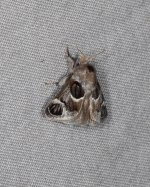 Pygmaeomorpha ocularis.JPG688.1 KB · Views: 2
Pygmaeomorpha ocularis.JPG688.1 KB · Views: 2 -
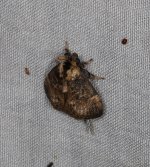 Pygmaeomorpha aquila (2).JPG994.7 KB · Views: 3
Pygmaeomorpha aquila (2).JPG994.7 KB · Views: 3 -
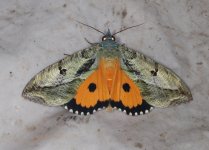 Eudocima materna (2).JPG1.7 MB · Views: 3
Eudocima materna (2).JPG1.7 MB · Views: 3 -
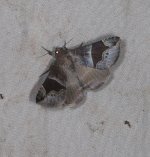 Bastilla solomonensis.JPG1.6 MB · Views: 3
Bastilla solomonensis.JPG1.6 MB · Views: 3 -
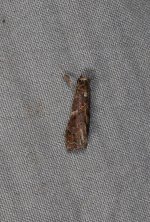 Arrade percopnopis 03 04 2024.JPG1.2 MB · Views: 2
Arrade percopnopis 03 04 2024.JPG1.2 MB · Views: 2 -
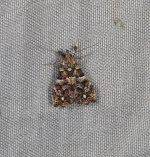 Arrade ostentalis 03 04 2024.JPG860.2 KB · Views: 2
Arrade ostentalis 03 04 2024.JPG860.2 KB · Views: 2 -
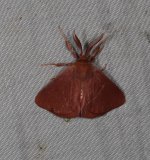 Anthela phoenicias 03 04 2024.JPG1.4 MB · Views: 2
Anthela phoenicias 03 04 2024.JPG1.4 MB · Views: 2
Always satisfying to get to the bottom of an ID that has been frustrating you for some time. I have caught this on a couple of occasions this Wet and had got no further than Notodont sp. Turns out I was way off base and this is Calophasidia cana (Noctuidae, Acronictinae). Listed as an endemic in Western Australia and the Top End my records appear to be the first for Queensland and the Cape. My week of trapping went well and has left me with a lot of work to catch up on, it ended with the genny cutting out, I got it serviced during the week and went out last night for it to fail again after 90 minutes grrrrr......it will go back to the shop this week for them to look at it again but am frustrated as conditions last night were excellent.
Attachments
A combination of work, on going family issue and a genny that just will not stay fixed ha meant not had time to post for a while let alone get out with the traps. Last night conditions were quite good but we decided to try and see the "Devils Comet" that was supposedly visible...sadly the cloud never relented and we failed. I have managed the occasional session in the office working on some of my backlog. One very much unwanted new species for my patch was this worn Spodoptera frugiperda aka Fall Armyworm. This highly destructive invasive species appeared in Aus four years ago and within a week was declared a pest species and although efforts are on going to try and contain its spread they are to date proving to be unsuccessful.
Attachments
A trio from last month
Heliocheilus neurota (Noctuidae, Heliothinae) - a rare annual visitor with a couple of records eah year
Ophyx pseudoptera (Erebidae, Erebinae) - only my fourth record of this species
Pygospila tyres (Crambidae, Spiloelinae) - a regular visitor to the sheet, one of the larger Spilomelinae to visit
Heliocheilus neurota (Noctuidae, Heliothinae) - a rare annual visitor with a couple of records eah year
Ophyx pseudoptera (Erebidae, Erebinae) - only my fourth record of this species
Pygospila tyres (Crambidae, Spiloelinae) - a regular visitor to the sheet, one of the larger Spilomelinae to visit
Attachments
Similar threads
Users who are viewing this thread
Total: 4 (members: 0, guests: 4)




